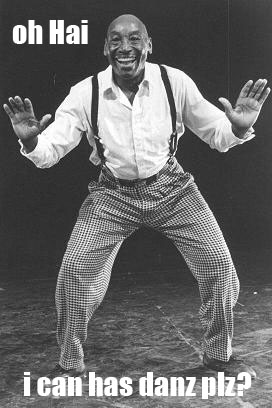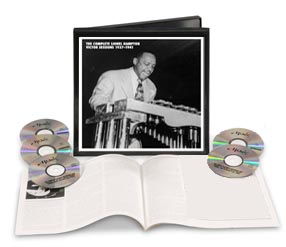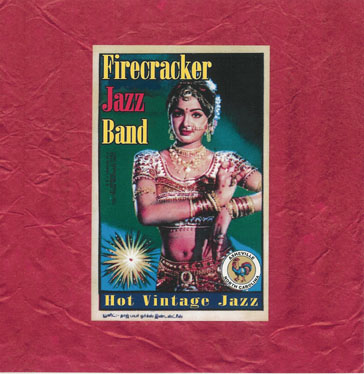As if Bechet and Ellington’d ever get into a ninja fight!
As if this is the final list of Ellington orsm!
8 of my favourite songs from Ellington’s (small and large) 1930s bands.
1. Jungle Nights In Harlem Duke Ellington and his Orchestra 1930
2. Shout ‘Em Aunt Tillie Duke Ellington and his Orchestra 1930
3. Rockin’ In Rhythm The Harlem Footwarmers with Duke Ellington 1930
4. It Don’t Mean A Thing (If It Ain’t Got That Swing) Duke Ellington and his Orchestra with Ivie Anderson 1932
5. Stompy Jones Duke Ellington and his Orchestra 1934
6. Digga Digga Do (M 187-2) Cootie Williams and his Rug Cutters 1937
7. The Back Room Romp Rex Stewart and his 52nd Street Stompers 1937
8. Top And Bottom Cootie Williams and his Rug Cutters 1939
Category Archives: cat blogging
amiri baraka at last
Finally, I’ve made it to Amiri Baraka (aka LeRoi Jones). It’s taken way too long.
I’ve just read this: Jazz and the White Jazz Critic. I didn’t read it there (in a google books page that make me suddenly think ‘what the fuck do we bother with publishers and book deals? All our rights as authors are dead with this one new technology… which really just does as the photocopier did for us all 20 years ago, but faster). I read it in a paper book.
And I got excited.
And then I went here and read that story. But mostly I looked at the youtube clip and got a bit excited.
I recommend the Jazz and White Critics article, as it sums up my misgivings about the jazznick fanmags and magazines and newsletters and recreationists.
Here’s one bit I like:
There were few ‘jazz critics’ in America at all until the ‘30s and then they were influenced to a large extent by what Richard Hadlock has called ‘the carefully documented gee-whiz attitude’ of the first serious European jazz critics. They were also, as a matter of course, influenced more deeply by the social and cultural mores of their own society. And it is only natural that their criticism, whatever its intentions, should be a product of that society, or should reflect at least some of the attitudes and thinking of that society, even if not directly related to the subject they were writing about, Negro music (Baraka 138).
And here’s another:
Most jazz critics began as hobbyists or boyishly brash members of the American petite bourgeoisie, whose only claim to any understanding about the music was that they knew it was different; or else they had once been brave enough to make a trip into a Negro slum to hear their favorite instrumentalists defame Western musical tradition. Most jazz critics were (and are) not only white middle-class Americans, but middle-brows as well (Baraka 140.)
This article is important because it was written by a black man in the 60s, and published in Down Beat magazine. I can’t remember whether Down Beat was moldy fig or modernist, but I think it was the latter. I cannot tell you how rare it is to come across a commentary by a black writer on jazz from the 60s or earlier. Doing all this reading of ‘jazz histories’ I’m beginning to think I might have to kill myself. It’s tedious. I like Baraka’s comment about ‘gee-whiz’ approaches to jazz. I was just saying to The Squeeze the other day that I’d have liked one of these guys to stop gushing about how wonderful jazz is, and to actually open their freakin eyes and see what’s going on around and beside the music. Hells, even in the music!
I’m gearing up for Blues People and will report back later.
happy birthday frankie!
As many of you know, Frankie Manning passed away a couple of weeks before the massive Frankiefest week of celebrations for his 95th birthday. The saddest of news, and yet, probably saddest because Frankie’d be crawling with jealousy that thousands of dancers are enjoying his party without him.
But even those of us who couldn’t get to New York are thinking of him. And watching clips that make us cry and cheer out loud:

happy day
 This lovely thing just arrived! Sure, it was a little embarrassing opening the door to the post dood wearing only a (very) short, light cotton dress, but I like to think I made his afternoon a little more interesting. But it was just GREAT to see a giant Mosaic cardboard box under his arm.
This lovely thing just arrived! Sure, it was a little embarrassing opening the door to the post dood wearing only a (very) short, light cotton dress, but I like to think I made his afternoon a little more interesting. But it was just GREAT to see a giant Mosaic cardboard box under his arm.
I love Lionel Hampton very much. He’s one of those guys I got into when I was first interested in DJing. In fact, I think his album Tempo and Swing was one of the first I bought thinking ‘this is DJing music’. I’m still a massive fan. He made great dancing music – stuff that’s really stompy and makes you want to get up and stomp around. Probably has something to do with his being a percussionist.
Anyhoo, it was interesting to see Ziggy Elman‘s name on the first page of the first CD’s liner notes. Elman’s interesting, not just because he’s responsible for the freakin’ awesome solo at the beginning of Tommy Dorsey’s song ‘Well git it!’. He caught my interest initially because he was a Jewish musician ‘performing’ whiteness – he changed his name.
This is something that Dean Collins also did (Saul Cohen originally). And all of this rings a bell with me because I keep coming across articles about Jewish musicians and actors who performed ‘blackness’ in the early days of radio and vaudeville – putting on ‘black’ accents and black face paint. It’s something I’d like to follow up in greater depth at some point, not only because of the interesting Jewish history of American show business, but also because of the ideological ramifications of ‘performing’ ethnicity in swing culture generally.
Because, of course, when we lindy hop, we are dancing what was an African American dance. Dancers who are into historical recreationism are particularly keen on emulating ‘black’ ways of moving and movement aesthetics. Which is problematic, when you remember that these are predominantly white, middle class kids (especially in America). But all this gets even more interesting when you take into account the fact that lindy hop is getting very popular in places like Korea. A recent exchange guest was telling me that there are thousands of swing dancers in Seoul, and that he social dances every single night of the week – far more often than we can here in Melbourne. And then, remember that not all Australian dancers are white – we see an increasingly multicultural local swing community here in Melbourne (though still not entirely multicultural or diverse).
But back to Ziggy Elman. His solo in ‘Well Git it!’ has particular cultural resonances for contemporary lindy hoppers, as mediated by the internet. The Mad Dog people performed a routine in Danvers to this song in 2002 which proved very popular with Australian dancers, particularly in the then-very-introverted Melbourne scene. Here was a group of young people dancing crazy, wild lindy hop without rules or costumes! Suddenly, there was an alternative to the carefully ‘safe’ teaching of the larger school, dancers who weren’t the ‘old’ recreationists (‘old’ being over 30, mind you). Suddenly, lindy hop got cool. Coolness which seemed to manifest in dancers wearing jeans in performances. And, most refreshingly for olden days music nerds like me, an increased general interest in music from the 1930s rather than 50s and 60s.
The Mad Dog troupe featured a bunch of young dancers who’re now rock stars, some of whom learnt to dance in Ithaca with Bill Borghida (and other teachers), and some of whom were in the Minnie’s Moochers dance troupe (circa 1999, 2000), which I remember being very influential. In fact, I remember watching this 2000 comp performance in my first year in Melbourne. This is as white a lindy hop performance as you’re going to see, but holy smokes, it’s tight. And these guys were young teenagers. If you’re familiar with Borghida’s teaching, you can see his sound technical foundations in there, and you can’t help but envy those kiddies their early start on lindy hop.
This performance is an interesting contrast with the Mad Dog routine in part because it is so tight and carefully choreographed – each dancer is attempting to dance and move in exactly the same way (here‘s an interesting clip of the girls doing solo charleston). In the Mad Dog routine we see choreographed steps, but each couple (and dancer) is quite unique. And of course, if you watch this composite clip of old school lindy hoppers, you can see that though the routines are really tight, each dancer has a unique style. The Big Apple contest is probably the best example of this. So this representation or performance of ‘individuality’ through improvisation and ‘styling’ signalled a shift away from very white, studio ballroom/concert dance aesthetics and towards a more ‘vernacular’ dance ethos. Vernacular in that people were actually dancing how they felt, in clothes they wore every day, with their own particular ‘accents’. And of course, lindy is just made for young people – it’s fast music, it’s crazy dancing, it’s irreverent, it’s badass*.
It’s probably worth pointing out that the American lindy hop competition culture in 2000 was very strictly regimented. The scoring was complicated, there was a whole range of weird rules about what you could and couldn’t do or wear in the competitions, and the type of dancing produced by these competitions was kind of… well, boring.
Competitions were kind of the same in Australia at the time, though there were no competitions run by lindy hoppers with specific ‘lindy hop’ categories. The biggest Australian competition at the time was ‘Best of the Best’, run by the VRRDA (Victorian Rock and Roll Dance Association), similarly constrained and rules-bound. It was also very much a ‘rock and roll’ competition – it was unusual to see ‘real’ lindy hop performances until about 2002.
In 2002 the MLX hosted the first Hellzapoppin’ competition, a model borrowed from the American Hellza competition – no rules, an impetus towards historical ‘authenticity’, run as part of an African American cultural history festival in Harlem. Though the American Hellza comp has been largely superseded by the ULHS (Ultimate Lindy Hop Show Down) competition for wild, crazy, ‘authentic’ lindy hop – not to mention popularity – Hellza is the only competition in Australia which actually carries on this particular ethos. All other large competitions in Australia are run by one school, and this school’s teachers tend to dominate the field, with the general tone being a little… straight.
So the 2002 Mad Dog performance is important as it signaled a diversion from the rules-bound competitions of previous years. The Mad Dog routine is probably more significant in American lindy as it was a very public diversion from the supergroove style that was popular at the time. I recently heard one of those dancers make a general comment about how ‘we’ used to dance ‘groovier, smoother’ and are not into ‘rawer’ dancing. It struck me as an example of how American dancers often generalise their experiences to the international community. But this is important stuff because these dancers were very young (and still are – under 30) and have been very influential in Australia.
So Ziggy Elman’s name probably carries a little more interpretive weight for me than for most people, and one day I’m going to read up on all that stuff on Jewish showbiz history. I promise.
For now I’m busy filling up the last tiny bits of space left on my hard drive with Lionel Hampton goodness. Yeah!
* old people like it too. Frankie is 93 and he still likes it.
thursday cat blogging
A little bit out of my sphere of interest, but it’s Sister Rosetta Tharpe, and that’s gotta be good.
I should really be putting this post under jeeeezus as well, as Tharpe is one of those big voice chicks who got it going on in revivalist shows originally.
Dancers know her for the stuff she did with Lucky Millinder (especially ‘Shout Sister Shout’), but she had a big rep as a stage performer.
I think I remember reading somewhere about her having to retune her guitar for white audiences in the north – apparently the distinctive southern tuning she used didn’t go down so well with the honkies. But this is a nice clip because it’s not all that often we see a black woman with a jazz/blues rep playing guitar on stage… Yes, yes, I know this is a 60s clip, and she’s playing gospel, but you know what I mean.
…I’m listening to a version of this song by Mahalia Jackson as I type… these chicks had freakin’ BIG voices.
want

- Any of these CDs from the Boilermaker Jazz Band.
- this CD from the Firecracker Jazz Band (listen – most especially to ‘Digga Digga Doo’ here)
And, because it’s not all want, I’m quite enjoying the Loose Marbles CD the lovely D sent me. Check out their version of ‘When I get low I get high’ (yes, a drug reference, yes one of the bestest songs evah). You can hear and watch them here, playing one of my favourite songs, ‘Four or Five Times’, heading towards the version I most prefer (a la the McKinney’s Cotton Pickers). The lyrics?
Four or Five times – McKinney’s Cotton Pickers, 1928
[scat]
I’m never about,
??
Just keep a-strolling,
Keep the ball a-rolling,
This isn’t a boast
But what i like most
Is to have someone true
Who will love me too,
four or five times.
Four or five times
Four or five times
there is delight in doing things right
four or five times
[four or five times]
Maybe I’ll sigh,
Maybe I’ll cry,
And if I die,
I’m gonna try…
four or five times.
We like to play
We like to sing
We like to go scedadilah do
Four or five times.
Bibop one
Bibop two
bibop three
Didahdiladee
Four or five times
[scat]
Yes, sure, ok!
What?
Yes. ! !
Four or five times,
Four or five times,
There is delight,
In doing things right,
Four or five times.
There’s a bunch of scatting in there I couldn’t transcribe, but you get the point.
Oh, and yes, it’s all about double entendre, yet again.
I love this song a whole lot, especially this version, though I never get to play it (too old, too fast, to obscure for mainstream lindy hoppers). I do play a pretty fabulous 1930s version by Woody Herman and his Orchestra which always really rocks the dancers. It’s a lot straighter and safer and very lindy hoppable, but still lots of fun.
There’s a version by Jimmie Lunceford (c 1935) which gets a fair bit of play in Melbourne, and I do prefer it, musically, though it’s lower energy than the Herman version. I play the Herman far more often than the Lunceford version. I also have a fully sick version by Lionel Hampton, which I never seem to play. I have no idea why not – it’s freakin’ awesome.
monday jazzblogging (because everyday’s caturday when you likes jass)

I wish I could shimmy like my sister Kate ~ Mugsy Spanier and His Ragtime Band 1939
Oh, wish I could shimmy,
like my sister Kate,
Now she shakes it like jelly,
On a plate.
My momma wanted,
To know last night,
Why the boys think Kate’s so nice,
Every boy in my neighbourhood
Now knew she could shimmy
And it’s understood,
I might be late,
But I’ll be up to date,
When I can shimmy like my sister Kate
I’m shoutin’
shimmy like my sister Kate,
Oh boy.
Just one verse, really, but it’s worth it, just for that line – she shakes it like jelly, on a plate. I like that sort of talk.
And the saucy trumpet (or is it a cornet?) solo makes it all work. But really, we’re all just waiting for the big old shouting chorus at the end.
(That’s not Kid’s Ragtime Band there in the image, it’s his other band – the Original Creole Jazz Band).
[PS – I just found this ‘collection of New Orleans greats by Mahalia Jackson’ and nearly weed with excitement. Apparently it’s a misprint. Wracked with disappointment. Trying to get over it]
[PPS my favourite Kid Ory song is ‘Creole Bo Bo’ – a French nursery rhyme done with a seriously swinging New Orleans rhythm which makes me HAPPY! It also defies DJing. At 203bpm, with French lyrics, an obviously nursery rhyme melody and too much swing for charleston, it’s just not a song you’ll play every day. For anyone other than yourself.]
